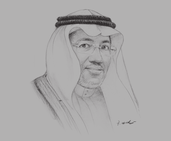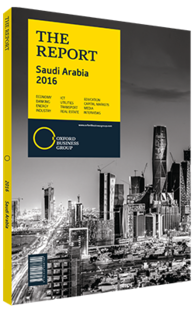Osama Al Bar, Mayor of Makkah: Interview

Interview: Osama Al Bar
How can the private sector play a bigger role in the development of the two holy mosques, especially in relation to religious tourism?
OSAMA AL BAR: Religious tourism makes up the bulk of the domestic and international tourism in Saudi Arabia, with the two holy mosques at Makkah and Medina in the western region of the Kingdom attracting significant numbers of visitors annually. Makkah receives over 3m pilgrims a year during the Hajj and 6m pilgrims for Umrah during the rest of the year. According to the World Bank, approximately 14.3m people visited Saudi Arabia in 2012, making it the world’s 19th-most-visited country.
The monetary value of activities related to the Hajj and Umrah, according to a field study, exceeded $30bn in 2014. Even now, the number of tourists is still only a fraction of the world’s Muslim population of 1.8bn, with year-on-year growth of 6.7%. It is estimated that the Hajj and Umrah taken together contribute 20% of non-oil GDP and 7% of the Kingdom’s total GDP. The statistics reflect the multiplier effect on the economy, as every one riyal spent brings four additional riyals. Recent local research predicts that nearly 1.8m people will be working in the industry by 2020, up from 1.3m in 2015.
There is huge potential going forward, with the government expecting to welcome 30m pilgrims a year by 2025. As a result, the necessary transport, hospitality and services infrastructure must be put in place to support a large influx of people. Touring operators will be well positioned to cater to this expanding segment, but must be prepared to attract more investment. These are areas where the private sector can play a role, particularly through public-private partnerships (PPPs), which the government has started championing this year, predominantly through the National Transformation Programme under Prince Mohammed bin Salman Al Saud. Improving Saudiisation in line with this is possible, as the private sector can absorb new entrants to the job market from a large youth population, easing the burden of the public sector to support employment.
To what extent will improvements in transport infrastructure, such as the new Haramain railway, enable further economic activity in Makkah?
AL BAR: Transport infrastructure is a key enabler of economic activity. Given that religious tourism will be a pillar of Makkah’s economic growth, transport infrastructure will be key to facilitating movement. The focus is on air, rail and land. Saudi Arabian Airlines is expanding their fleet over the coming years and the new Jeddah Airport is expected to become operational by the end of 2016.
Rail connectivity should play a key role in facilitating movement, specifically through the Haramain High Speed Rail, which is expected to become operational by early 2017. It will link Makkah, Medina, King Abdullah Economic City, Rabigh, Jeddah and the new airport. The railway is expected to carry 3m passengers a year, relieving traffic congestion on the roads.
What steps are being taken to meet housing requirements in Makkah?
AL BAR: The Makkah housing market has been attractive regardless of the economic situation in the Kingdom and has undergone heavy private sector investment. We expect about 1m additional beds to become available in the next couple of years.
The current economic situation in the Kingdom, characterised by lower oil prices, the financial pressures of the war in Yemen and budget cuts, has emphasised the need for public and private sector collaboration. The government is seeking to encourage private investment across many sectors, creating an enabling environment. Housing is one of the sectors that will require PPPs, and as a result we are seeing the private sector ramp up investment in Makkah.
You have reached the limit of premium articles you can view for free.
Choose from the options below to purchase print or digital editions of our Reports. You can also purchase a website subscription giving you unlimited access to all of our Reports online for 12 months.
If you have already purchased this Report or have a website subscription, please login to continue.

